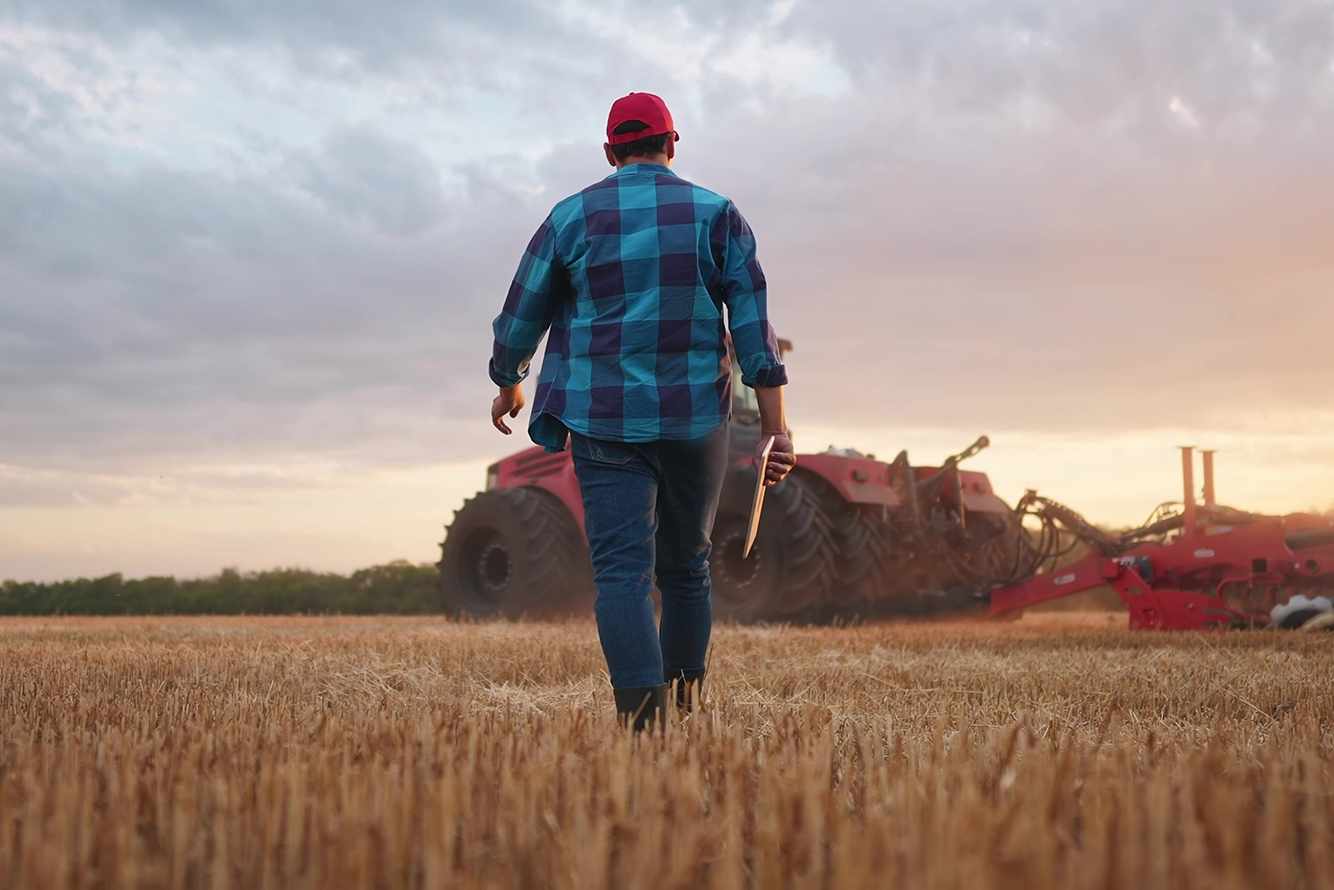Illinois and the larger Midwest region provide the food that feeds not just the rest of the nation, but much of the world. Today, with innovations such as ethanol and soy biodiesel, Illinois farms are also key players in the 21st century energy economy. Through its many forms: farming, manufacturing, retailing and trading, agriculture has been the backbone of Illinois’ economy for over 200 years.
But it was a long road to get here, one built by the hard work of generations of Illinois family farmers and Illinois-based agribusiness companies.
Indigenous subsistence farmers were the first to discover that Illinois provided bountiful agricultural opportunities. By the time the first French explorers arrived in the 17th century, Illinois was a land of immense agricultural potential, both in terms of crops and of livestock.
“We have seen nothing like this river that we enter as regards its fertility of soil, its prairies and woods; its cattle, elk, deer, wildcats, bustards, swans, ducks, parroquets and even beaver,” wrote a member of the Marquette and Jolliet expedition on the Illinois River in the 1670s. “We have seen nothing like this in all our travels.”
After the Revolutionary War more settlers arrived from the east coast, emerging from the wooded hills of Kentucky to suddenly find themselves on a vast open prairie with a temperate climate.
But these settlers faced challenges in adjusting to Illinois’ topography. During the 18th century, it was widely believed that the most fertile farmland was the land which produced the tallest trees, and so it took some time for the true value of the prairie to be fully appreciated. Even then, there were difficulties, as farmers accustomed to the sandy soil of the east coast found their equipment to be wholly inadequate to the challenge of Illinois’ denser, claylike ground which clung to their plow blades and tired out their teams of oxen.
It was an Illinois blacksmith named John Deere who found the solution: abandoning the cast iron plows of the east and inventing the polished steel plow. Word of Deere’s invention spread, and demand skyrocketed. Having revolutionized the plow, he now revolutionized the manufacturing process and began churning out steel plows to keep up with the orders flowing in.
Farming in Illinois exploded, and in the years following the Civil War the state boomed, becoming a magnet for farmers from the east coast and from Europe eager to take advantage of the abundant, fertile land. Some of these families purchased land and started farms which are still in the hands of their descendants today, five or six generations later.
Chicago became a boom town in the late 19th century thanks to Illinois’ agriculture and the railroads necessary to transport its products – which fortunately all converged in the city by Lake Michigan. It was known as “Hog Butcher to the World” in Illinois writer Carl Sandburg’s famous words of the early 20th century. Manufacturers like Cyrus McCormick recognized the city as a central location for agricultural equipment production and located their firms and factories there.
To trade the tremendous amounts of farm goods being produced in Illinois and the surrounding areas, the Chicago Board of Trade opened its doors in 1848. A half century later the Chicago Butter and Egg Board was founded, changing its name in 1917 to the Chicago Mercantile Exchange. Each grew along with the state’s agricultural industry, merging in the early 21st century into what is now known as the CME Group, which today bills itself as “the world’s leading derivatives marketplace.” All the while, agribusiness firms such as John Deere and Archer Daniels Midland were thriving downstate.
But with all the corporate growth of agribusiness and commodities trading firms, the basic bedrock of Illinois agriculture remains the family farmer, working the land for hours each day, in heat and cold, tending crops, maintaining equipment, taking care of animals, and still finding time to raise a family and support a community.
Today 96% of Illinois farms are family-owned. Nearly every school district in the state has a Future Farmers of America chapter, preparing the next generation of Illinois family farmers to take the reins of the state’s leading industry.
These family farms produce the crops and livestock which make Illinois an agricultural leader for the nation and the world. They also are committed to good stewardship and conservation of the land for future generations through local organizations like Soil and Water Conservation Districts and the Illinois Farm Bureau.
Thanks to Illinois’ geographic size and shape – spanning more than 400 miles from north to south – the state has a wide range of growing seasons and diverse agricultural outputs. Illinois leads the nation in pumpkin production, and is among the leaders in corn, soybeans, wheat, cattle and hogs. For the past three decades Illinois has been home to a growing locally-produced wine industry.
Certain areas of the state are known for fruit production, with their local fruit crops lending their names to annual community celebrations of agriculture such as the Nauvoo Grape Festival, Murphysboro Apple Festival, and the Cobden Peach Festival. They celebrate not just local pride, but the labors of the farmers who built the communities.
Today we thank our Illinois farmers for over 200 years of hard work: feeding the world, building our state and protecting its natural resources for future generations of Illinois family farmers.
